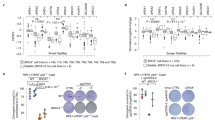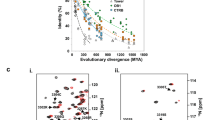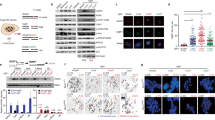Abstract
The BRCA2 tumor suppressor has been implicated in the maintenance of genomic integrity through a function in cellular responses to DNA damage. The BRCA2 protein directly associates with Rad51, that is essential for repair of double-strand breaks (DSBs) by homologous recombination (HR). In this report, we study the BRCA2-defective Chinese hamster cell mutant V-C8 for its ability to perform homology-directed repair (HDR) between repeated sequences. V-C8 cells were recently shown to be defective in Rad51 foci formation in response to DNA damage. Strikingly, we find that these BRCA2 mutant cells exhibit a strong stimulation of HDR activity compared to the V79 parental cells, which harbor a wild-type BRCA2. Furthermore, molecular characterization of the HDR products shows that loss of BRCA2 in V-C8 cells leads to significant reduction in Rad51-dependent gene conversion but strong enhancement of Rad51-independent single-strand annealing (SSA) events frequency. These data imply that, when HDR by conservative gene conversion is impaired, DSBs usually repaired by this pathway are instead resolved by other non-conservative HDR subpathways. Therefore, high chromosomal instability in BRCA2-deficient cells presumably results from enhancement of error-prone repair mechanisms, such as SSA.
This is a preview of subscription content, access via your institution
Access options
Subscribe to this journal
Receive 50 print issues and online access
$259.00 per year
only $5.18 per issue
Buy this article
- Purchase on Springer Link
- Instant access to full article PDF
Prices may be subject to local taxes which are calculated during checkout



Similar content being viewed by others
References
Baumann P, West SC . 1998 Trends Biochem. Sci. 23: 247–251
Capizzi RL, Jameson JW . 1973 Mutation Res. 17: 147–148
Connor F, Bertwistle D, Mee PJ, Ross GM, Swift S, Grigorieva E, Tybulewicz VL, Ashworth A . 1997 Nat. Genet. 17: 423–430
Davies AA, Masson JY, McIlwraith MJ, Stasiak AZ, Stasiak A, Venkitaraman AR, West SC . 2001 Mol. Cell. 7: 273–282
De Silva IU, McHugh PJ, Clingen PH, Hartley JA . 2000 Mol. Cell. Biol. 20: 7980–7990
Dronkert MLG, Kanaar R . 2001 Mutation Res. 486: 217–247
Haaf T, Golub EI, Reddy G, Radding CM, Ward DC . 1995 Proc. Natl. Acad. Sci. USA 92: 2298–2302
Johnson RD, Jasin M . 2000 EMBO J. 19: 3398–3407
Kraakman-van der Zwet M, Overkamp WJ, van Lange RE, Essers J, van Duijn-Goedhart A, Wiggers I, Swaminathan S, van Buul PP, Errami A, Tan RT, Jaspers NG, Sharan SK, Kanaar R, Zdzienicka MZ . 2002 Mol. Cell. Biol. 22: 669–679
Lambert S, Lopez BS . 2000 EMBO J. 19: 3090–3099
Liu N, Lamerdin JE, Tebbs RS, Schild D, Tucker JD, Shen MR, Brookman KW, Siciliano MJ, Walter CA, Fan W, Narayana LS, Zhou ZQ, Adamson AW, Sorensen KJ, Chen DJ, Jones NJ, Thompson LH . 1998 Mol. Cell. 1: 783–793
Meyn MS . 1993 Science 260: 1327–1330
Moynahan ME, Pierce AJ, Jasin M . 2001 Mol. Cell. 7: 263–272
Overkamp WJI, Rooimans MA, Neuteboom I, Telleman P, Arwert F, Zdzienicka MZ . 1993 Somat. Cell Mol. Genet. 19: 431–437
Papouli E, Lafon C, Valette A, Zdzienicka MZ, Defais M, Larminat F . 2000 Biochem. Pharmacol. 59: 1101–1107
Patel KJ, Yu VP, Lee H, Corcoran A, Thistlethwaite FC, Evans MJ, Colledge WH, Friedman LS, Ponder BA, Venkitaraman AR . 1998 Mol. Cell. 1: 347–357
Richardson C, Jasin M . 2000 Nature 405: 697–700
Sharan SK, Morimatsu M, Albrecht U, Lim DS, Regel E, Dinh C, Sands A, Eichele G, Hasty P, Bradley A . 1997 Nature 386: 804–810
Sonoda E, Sasaki MS, Buerstedde JM, Bezzubova O, Shinohara A, Ogawa H, Takata M, Yamaguchi-Iwai Y, Takeda S . 1998 EMBO J. 17: 598–608
Sonoda E, Sasaki MS, Morrison C, Yamaguchi-Iwai Y, Takata M, Takeda S . 1999 Mol. Cell Biol. 19: 5166–5169
Tashiro S, Walter J, Shinohara A, Kamada N, Cremer T . 2000 J. Cell Biol. 150: 283–291
Tavtigian SV, Simard J, Rommens J, Couch F, Shattuck-Eidens D, Neuhausen S, Merajver S, Thorlacius S, Offit K, Stoppa-Lyonnet D, Belanger C, Bell R, Berry S, Bogden R, Chen Q, Davis T, Dumont M, Frye C, Hattier T, Jammulapati S, Janecki T, Jiang P, Kehrer R, Leblanc JF, Mitchell JT, McArthur-Morrison J, Nguyen K, Peng Y, Samson C, Schroeder M, Snyder SC, Steele L, Stringfellow M, Stroup C, Swedlund B, Swenson J, Teng D, Thomas A, Tran T, Tranchant M, Weaver-Feldhaus J, Wong AKC, Shizuya H, Eyfjord JE, Cannon-Albright L, Labrie F, Skolnick MH, Weber B, Kamb A, Goldgar DE . 1996 Nat. Genet. 12: 333–337
Tutt A, Bertwistle D, Valentine J, Gabriel A, Swift S, Ross G, Griffin C, Thacker J, Ashworth A . 2001 EMBO J. 17: 4704–4716
Tutt A, Gabriel A, Bertwistle D, Connor F, Paterson H, Peacock J, Ross G, Ashworth A . 1999 Curr. Biol. 9: 1107–1110
Verhaegh GWCT, Jongmans W, Morolli B, Jaspers NGJ, van der Schans GP, Lohman PHM, Zdzienicka MZ . 1995 Mutation Res. 337: 119–129
Vispé S, Cazaux C, Lesca C, Defais M . 1998 Nucleic Acids Res. 26: 2859–2864
Wooster R, Neuhausen SL, Mangion J, Quirk Y, Ford D, Collins N, Nguyen K, Seal S, Tran T, Averill D, Fields P, Marshall G, Narod S, Lenoir GM, Lynch H, Feunteun J, Devilee P, Cornelisse CJ, Menko FH, Daly PA, Ormiston W, McManus R, Pye C, Lewis CM, Cannon-Albright LA, Peto J, Ponder BAJ, Skolnick MH, Easton DF, Goldgar DE, Stratton MR . 1994 Science 265: 2088–2090
Yu VP, Koehler M, Steinlein C, Schmid M, Hanakahi LA, van Gool AJ, West SC, Venkitaraman AR . 2000 Genes Dev. 14: 1400–1406
Yuan SS, Lee SY, Chen G, Song M, Tomlinson GE, Lee EY . 1999 Cancer Res. 59: 3547–3551
Zdzienicka MZ, Arwert F, Neuteboom I, Rooimans M, Simons JWIM . 1990 Somat. Cell. Mol. Genet. 6: 575–581
Zhang LH, Vrieling H, van Zeeland AA, Jenssen D . 1992 J. Mol. Biol. 223: 627–635
Acknowledgements
We thank Dr MZ Zdzienicka for generously providing us with the V-C8 cell line and Dr S Meyn for providing the pNeoA vector. This work was supported by the Association pour la Recherche sur le Cancer grant 9238.
Author information
Authors and Affiliations
Corresponding author
Rights and permissions
About this article
Cite this article
Larminat, F., Germanier, M., Papouli, E. et al. Deficiency in BRCA2 leads to increase in non-conservative homologous recombination. Oncogene 21, 5188–5192 (2002). https://doi.org/10.1038/sj.onc.1205659
Received:
Revised:
Accepted:
Published:
Issue Date:
DOI: https://doi.org/10.1038/sj.onc.1205659
Keywords
This article is cited by
-
Counting the cost of public and philanthropic R&D funding: the case of olaparib
Journal of Pharmaceutical Policy and Practice (2022)
-
The roles of BRCA1 and BRCA2 and associated proteins in the maintenance of genomic stability
Oncogene (2006)
-
Strand invasion involving short tract gene conversion is specifically suppressed in BRCA2-deficient hamster cells
Oncogene (2004)
-
Radiation-induced genomic instability and its implications for radiation carcinogenesis
Oncogene (2003)
-
The Fanconi anaemia/BRCA pathway
Nature Reviews Cancer (2003)



